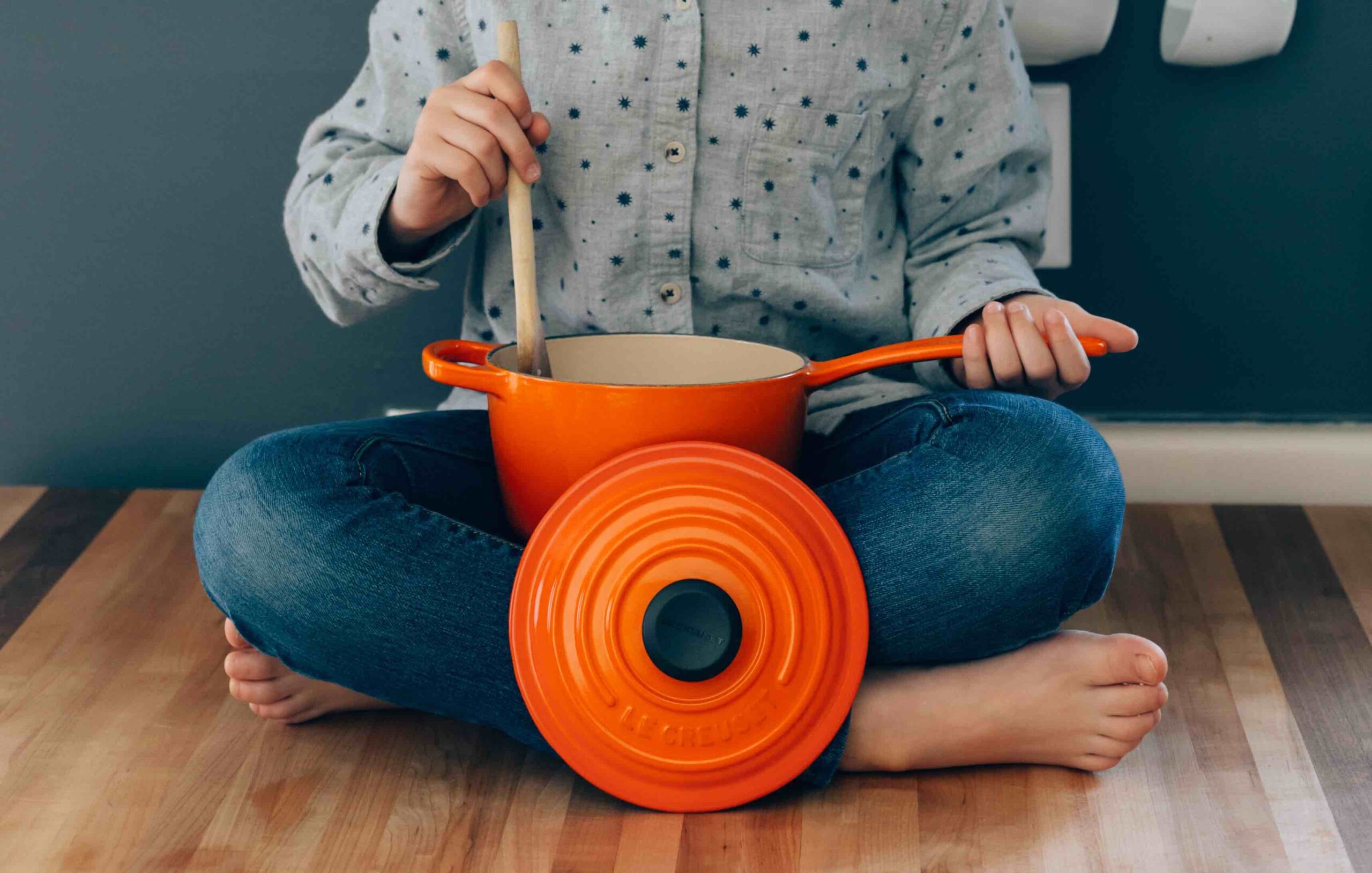The Art of Service

About This Resource
Details
This lesson guides students toward the practice of offering in a fun and engaging way.
View the most recent version of this lesson as a Google Doc here.
Unit: Interconnection
Grade Level: 1-4
Duration 2-3 hours (split over a few days):
15 minute introduction
60 minutes for cooking prep
30-60 minutes design and writing
30-45 minutes serving experience
About the Lesson
Students learn that giving (dana) can be through service to others. Through our energy, compassion and awareness we can serve others in ways that might seem small but that bring us joy. This service and giving in turn create harmonious sangha and a sense of well-being.
The planning and preparation that goes into creating a restaurant is full of learning opportunities. The culmination—welcoming others to the restaurant (another class for example), then serving them, mindfully and with kindness—is truly meaningful (and fun!).
Essential/Guiding Questions
- Where do things come from and where do they go?
- What does it mean to serve?
- How and when is it beneficial to serve others?
- Who benefits from serving?
Outcomes
Students will…
| Know | Understand | Do (or be able to do) | |
|---|---|---|---|
|
The meaning of the Sanskrit words dana and sangha How to greet another person to help them feel welcome How to prepare tea and follow a recipe How to set a table That Right Speech and Right Livelihood are two of the noble eight-fold paths |
That giving (dana) can be non-material That words and actions have power That there is dignity, power, and joy in acts of compassionate service That because our words have power, we can use Right Speech as inspiration to speak compassionately to each other That giving and receiving is vital to our well-being and to a harmonious sangha or community |
Confidently greet and introduce themselves to others Use Right Speech wherever possible Consciously create a harmonious sangha
|
Activity
Teacher Prep: Look up an easy recipe, ideally one that students can put an individual stamp on. We used a recipe for Vegan Banana Muffins and had students choose to add strawberries, blueberries, walnuts and/or raisins to their muffin cups. If making food at school, gather the necessary mixing and measuring tools and other equipment in advance so that fresh ingredients can be brought in that day.
Hook/Connection:
Ask students to discuss their experiences going to restaurants.
Conduct a mindful tasting exercise (try a shortened version of this one) and then ask, “What would it be like to create a delicious and nutritious food and share it with others?”
Materials:
- Food to serve, either prepared by students or purchased
- Art supplies to make decorations for restaurant (place mats, origami, mood lighting, etc.)
- Plates and cutlery, napkins
- Music
- Currency – real or designed
- Paper and pencils for orders and checks
Introduce and Teach:
1) Intro-Role Play
Teachers role play a negative example of someone serving a “customer” at a restaurant, modeling 3-4 examples of uncaring service with harsh speech and inattentiveness.
Think Pair Share: Ask children to share in pairs what the server could have done better and what the customer might be feeling.
Teachers “learn” and write on the board the important points of being a good server. These might include: smile, see the other as ourselves, share name, ask how the other is, ask if they have any questions, explain items on menu, use gentle and caring (right) speech and mindful movement.
Teachers role play for a second time, using the points made by children to model a happy, caring experience where the server “gives” themselves.
Teachers could share a story of their own experience where a server got the order wrong but nevertheless made the “customer” feel special and cared for, demonstrating that it’s great as servers if we can get an order right, but the way in which we do it–kindly and compassionately–is far more important. They can also introduce the idea of right speech and right livelihood at this time.
2) Restaurant Design
Students spend time inventing a restaurant, naming the restaurant, deciding on and designing the restaurant décor, planning what will be served, etc.
Students may also design the currency to be used.
Students design an invitation for their opening and help decide who will be invited (could be another class, teachers, parents or others as fits the schedule and circumstances)
They learn about how to welcome someone and how to take an order, leave a check, etc.
3) Food Prep
Students decide what the restaurant can serve, choose an item to create, and follow a recipe.
They may learn how to properly hold a plate, which side to serve on, how to set a table, etc.
They learn about hygiene.
4) Service
Rehearsal: After discussing the teachers’ role modeling exercise, students learn how to welcome someone and how to take an order, leave a check, etc., then practice doing and saying the things they will want to remember when they are serving their “real” customers.
The children set up all the final details in time for the arrival of whichever class or parents have been invited to come and be served in the restaurant by the children.
The event: Students greet the customers at the door, explain the menu, take orders, fulfill orders, provide the check, take money, and potentially make change.
Active Engagement Strategies:
How will they learn? What kinds of pairings, groupings, knowledge sharing can they do?
Students predominantly learn through practicing being a server and then through the “real” experience.
Closing/Review:
Students share what their experience was to a partner and then with the whole class. Some supporting questions may be: What surprised us about the experience? How did it feel to serve? How did you know if you were being compassionate and kind to the customer?
Assessments:
Observing children’s engagement as they serve and their feedback in the closing circle.
Resources and Materials
For TeachersAbout Dana: https://www.accesstoinsight.org/lib/authors/thanissaro/nostringsattached.html Eightfold Path: https://www.accesstoinsight.org/lib/authors/bodhi/waytoend.html https://www.amazon.com/Noble-Eightfold-Path-Way-Suffering/dp/192870607X https://tricycle.org/magazine/noble-eightfold-path/ Mindful eating: https://www.mindfulschools.org/personal-practice/mindful-eating/ How to set a table: https://www.architecturaldigest.com/story/how-to-set-a-dinner-table https://blog.hubspot.com/agency/currency-designs Napkin folding origami: |
For StudentsRead aloud: “Meet My Neighbor, the Restaurant Owner,” by Marc Crabtree (nonfiction) “I Can’t, Said The Ant,” by Polly Cameron (rhyming couplets) |
Government Standards Met
Comprehension and Collaboration (from the Speaking and Listening Standards)
2SL1: Participate in collaborative conversations with diverse peers and adults in small and large groups and during play.
2SL1a: Follow agreed-upon rules for discussions and participate by actively listening, taking turns, and staying on topic.
2SL1b: Build on others’ talk in conversations by linking their comments to the remarks of others through multiple exchanges.
2SL1c: Ask for clarification and further explanation as needed about topics and texts under discussion.
2SL1d: Consider individual differences when communicating with others.
2SL2: Recount or describe key ideas or details of diverse texts and formats.
2SL3: Develop and answer questions about what a speaker says; agree or disagree with the speaker’s point of view, providing a reason(s).
Next Generation Math Standards (Grade 2) – from http://www.nysed.gov/common/nysed/files/programs/curriculum-instruction/nys-next-generation-mathematics-p-12-standards.pdf
NY-2.MD.8b: Solve real world and mathematical problems within one dollar involving quarters, dimes, nickels, and pennies, using the ¢ (cent) symbol appropriately.
NY-2.G.3: Partition circles and rectangles into two, three, or four equal shares. Describe the shares using the words halves, thirds, half of, a third of, etc. Describe the whole as two halves, three thirds, four fourths.
Cross Content
| Sciences | Cooking / Math: Measure ingredients and weights; understand fractions from recipes; count coins (counting by 5 and 10) and make change. |
| Humanities | How to say welcome in different languages; How-to texts for recipes, writing menus; Understanding what credit is, credit cards, the idea of a gift economy. |
| Arts |
Create an appealing physical environment: Origami cranes to hang as decoration, origami napkins, weaving paper placemats, designing menus and logos, creating lamps or special lighting; Create and perform music as part of the restaurant experience. |
| Embodiment | Mindful movement |
| Contemplative/Dharma |
Dana, what does it mean to give and serve? Mindful eating |
Differentiation
- If children are not yet confident to count by 5 and 10: Remove requirement for items to be paid.
- If children need support emotionally or to recall steps of serving: Serve in pairs or with an adult.
- Purchase instead of make the food.
Related Resources
Origami Buddha on a Lotus
Tea Parties
Orientation Program at the Middle Way School
Sacred Spaces at School and Home
About The Contributor
An independent day school in the Hudson Valley offering a comprehensive academic education merged with the Buddhist view of wisdom and compassion. Timeless wisdom for a modern world.

